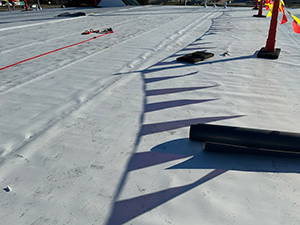
When it comes to safeguarding commercial properties in Shelby, OH, nothing is more critical than a professionally completed roof installation. A strong roof ensures protection from the elements, reduces long-term maintenance costs, and increases property value. For building owners considering a new installation, understanding the process, from tear-off to the final nail, helps set expectations and ensures a smoother project. To work with seasoned professionals, reach out to First Class Roofing at (888) 699-9321.
Step-by-Step Roof Installation: From Tear-Off to Final Nail
Step 1: Preparing the Job Site and Initial Tear-Off
The process begins with thorough preparation. Crews set up safety measures around the building to protect tenants, employees, and the surrounding property. This includes barriers, signage, and equipment staging.
Next comes the tear-off. For commercial roofs, this step involves removing old materials like metal panels, single-ply membranes, or built-up roofing. The tear-off exposes the roof deck so contractors can inspect it for hidden issues, such as water damage or rot. Identifying these problems early prevents future structural risks and ensures the new roof system has a solid foundation.
Step 2: Deck Repair and Underlayment Installation

Once the deck is inspected, any damaged areas are repaired or replaced. A stable deck is vital because it supports the new roofing system and ensures long-term durability.
After repairs, the underlayment is installed. This layer acts as a secondary defense against water infiltration, protecting the deck from moisture in case of leaks. For commercial buildings, high-performance underlayments are often used to withstand heavy rains, snow, and fluctuating Ohio weather conditions. This step creates a watertight barrier, setting the stage for the final roofing materials.
Step 3: Installing the Roofing System
The next stage is the installation of the chosen roofing material. Commercial property owners often select TPO, PVC, EPDM, or metal roofing systems based on performance, budget, and energy efficiency needs. Each material is installed differently:
Single-Ply Membranes (TPO, PVC, EPDM): These are rolled out across the roof deck and secured either mechanically, with adhesive, or through heat welding at the seams.
Metal Roofing: Panels are measured, cut, and fastened with precision to ensure tight seals and weather resistance.
During this step, proper ventilation and insulation are also considered. These components improve energy efficiency, reduce heating and cooling costs, and extend the roof’s lifespan.
Step 4: Flashing, Sealing, and Final Details
Flashing is installed around vulnerable areas like vents, skylights, chimneys, and HVAC units. This detail is crucial because most leaks occur in these transition areas. High-quality flashing and sealing ensure a watertight finish and prevent long-term damage.
Finally, crews drive in the last nails or fasteners, ensuring the entire system is properly secured. A final inspection follows, during which every seam, joint, and edge is checked for quality. Clean-up of debris, materials, and tools completes the process, leaving the property ready for use.
Roof Installation Professionals
For commercial building owners in Shelby, OH, roof installation is a significant investment. Cutting corners during any stage of the process can lead to costly repairs or premature replacement. By following a step-by-step method, professionals ensure durability, weather resistance, and a roof that performs well for decades.
If your property needs a reliable and expertly managed roof installation, contact First Class Roofing at (888) 699-9321 today to begin planning your project.
FAQ
What materials are best for commercial roof installation?
Common choices include TPO, PVC, EPDM, and metal roofing, each offering different benefits in cost, durability, and energy efficiency.
What role does underlayment play in roof installation?
Underlayment serves as a protective layer beneath the roofing material, adding water resistance and extending the roof’s life.
Can roof installation improve energy efficiency?
Yes, modern materials like reflective single-ply membranes and insulated metal panels reduce heat absorption, lowering energy costs.